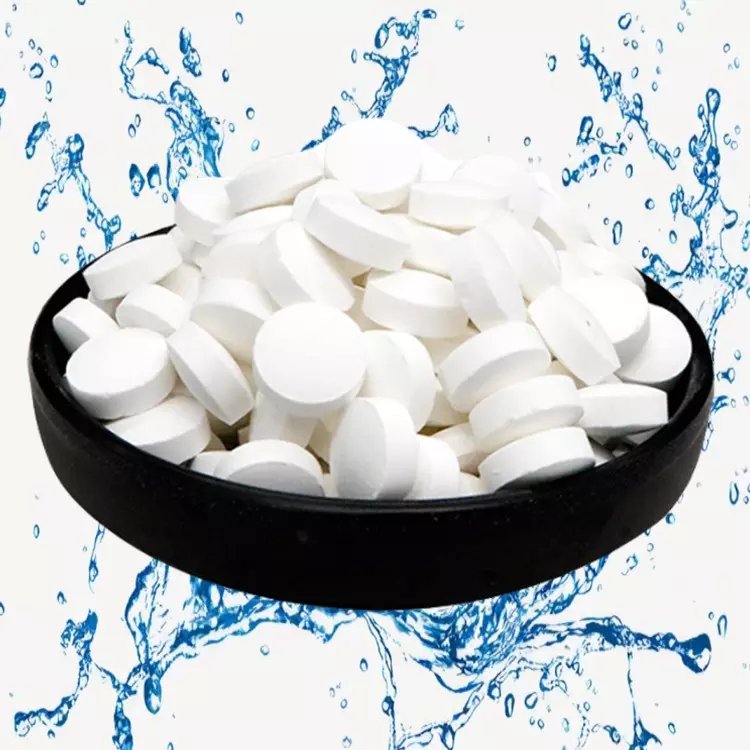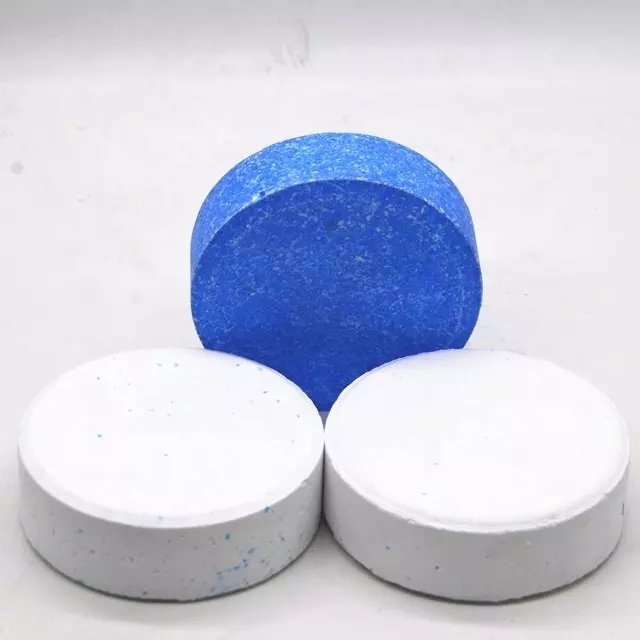I.Introduction
Maintaining a clean and safe swimming pool is essential for both health and enjoyment. Proper pool cleaning ensures the water is safe for swimming, free from harmful bacteria, and remains crystal clear. Among the various pool cleaning methods, chlorine tablets are a popular and effective solution. Chlorine tablets help to disinfect the water, kill harmful bacteria, and prevent algae growth, all of which contribute to maintaining a healthy swimming environment.

II.Understanding Chlorine Tablets
What Are Chlorine Tablets?
Chlorine tablets are solid forms of chlorine that are commonly used to sanitize swimming pool water. They are compact, slow-dissolving tablets that release chlorine gradually, ensuring continuous protection against harmful microorganisms. Chlorine tablets are available in different sizes and compositions, but their main function is to sanitize pool water, keeping it free from bacteria and algae.
Types of Chlorine Tablets
There are primarily two types of chlorine tablets: fast-dissolving and slow-dissolving. Fast-dissolving chlorine tablets release their chlorine content rapidly, making them suitable for smaller pools or quick adjustments. On the other hand, slow-dissolving tablets dissolve more gradually, providing long-term protection and making them ideal for larger pools. Understanding the difference between these two types helps in selecting the right chlorine tablets for your pool maintenance needs.
III.Preparation Before Using Chlorine Tablets
Test Pool Water Quality
Before applying chlorine tablets, it’s essential to test the pool water to ensure it is balanced. You can use test strips or a digital water tester to measure chlorine levels, pH, and overall water quality. Ensuring the proper balance of chemicals in your pool will enhance the effectiveness of chlorine tablets and prevent issues like algae growth or cloudiness.
Gather Necessary Equipment
To effectively use chlorine tablets, you will need a few essential tools. A floating dispenser or a chlorine tablet dispenser is necessary to distribute the chlorine evenly throughout the pool. Additionally, gloves and protective eyewear are important when handling chlorine tablets to avoid any irritation or contact with your skin and eyes.
IV.How to Use Chlorine Tablets
Using a Floating Dispenser or Chlorine Tablet Dispenser
The most efficient way to distribute chlorine tablets in your pool is by using a floating dispenser or a chlorine tablet dispenser. These devices allow chlorine to be released gradually into the water, ensuring that your pool is sanitized over time. Avoid directly dropping chlorine tablets into the pool as this can lead to uneven distribution and potential damage to pool surfaces.
Calculate the Correct Amount of Chlorine Tablets
To determine the right amount of chlorine tablets, it’s important to consider your pool’s volume. Generally, the dosage will depend on the size of the pool and the current chlorine levels. Following the manufacturer’s instructions and calculating based on your pool’s volume helps prevent both under-dosing and over-dosing, both of which can lead to water issues or chlorine waste.
Frequency and Timing
Chlorine tablets need to be replaced periodically. Typically, this can range from every 1-2 weeks, depending on your pool’s size and usage. If your pool is used frequently, you might need to adjust the frequency of tablet replacement. Regular maintenance is crucial for keeping your pool clean and safe for swimmers.
V.Tips for Increasing the Efficiency of Chlorine Tablets
Ensure Proper Water Circulation
A well-functioning pool circulation system is vital for ensuring the chlorine is evenly distributed. Maintaining your pool’s filtration system will allow the chlorine tablets to dissolve and spread throughout the water effectively. Check your pool’s pump and filtration system regularly for optimal performance.
Combine with Other Pool Maintenance Methods
In addition to using chlorine tablets, you should regularly clean the pool and remove debris, leaves, and other contaminants. Furthermore, pairing chlorine tablets with other pool maintenance chemicals like algae inhibitors or pH balancers can optimize water quality. This multi-step approach will ensure that your pool remains safe, clear, and inviting.
VI.Common Problems and Solutions
Chlorine Odor: How to Reduce Chemical Residues
A strong chlorine smell can indicate that your pool has excess chlorine or other chemical residues. To reduce this odor, consider adjusting your chlorine tablet usage and ensure proper water circulation. Regular shock treatments can also help remove excess chlorine from the pool water.
Cloudy Water: Possible Causes and Solutions
Cloudy water can be caused by several factors, including improper chlorine levels, poor filtration, or an imbalance in pH levels. If you encounter cloudy water, test and adjust the water chemistry, clean the pool filter, and ensure that the chlorine tablets are dissolving properly.
Chlorine Tablets Dissolving Too Quickly or Slowly: Adjusting Usage
If you notice that your chlorine tablets dissolve too quickly or too slowly, it may be due to water temperature, flow rate, or the type of tablets being used. Slow-dissolving tablets are recommended for consistent, long-term sanitization, while adjusting the flow rate can help optimize the release of chlorine into the pool.
VII.Safety Tips for Using Chlorine Tablets
Chlorine tablets should be stored properly to ensure their effectiveness and safety. Store them in a cool, dry place away from direct sunlight and moisture. Make sure they are kept out of reach of children and pets. Furthermore, always wear gloves and protective eyewear when handling chlorine tablets to prevent skin and eye irritation. Dispose of used or expired chlorine tablets responsibly, following environmental guidelines.
VIII.Conclusion
Using chlorine tablets is an efficient and effective way to maintain a clean and safe swimming pool. By understanding the different types of chlorine tablets, preparing your pool, and following the right procedures for use, you can ensure your pool stays healthy and inviting. Whether you’re maintaining a small private pool or a large community pool, purchasing discount chlorine tablets or choosing to buy chlorine tablets wholesale can help you save money while keeping your pool in top condition. Regular pool maintenance and proper usage of chlorine tablets will keep your swimming environment enjoyable all year long.


 Instant
Quote
Instant
Quote Email
Us
Email
Us